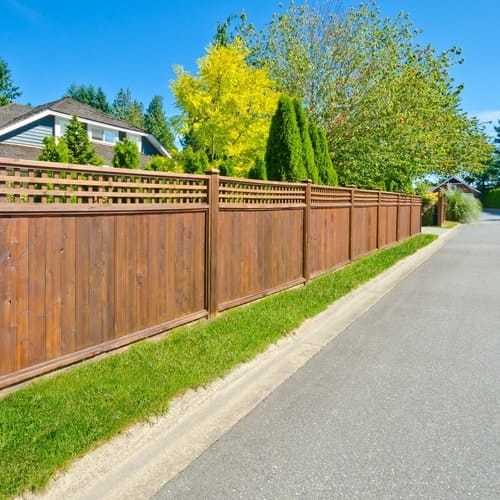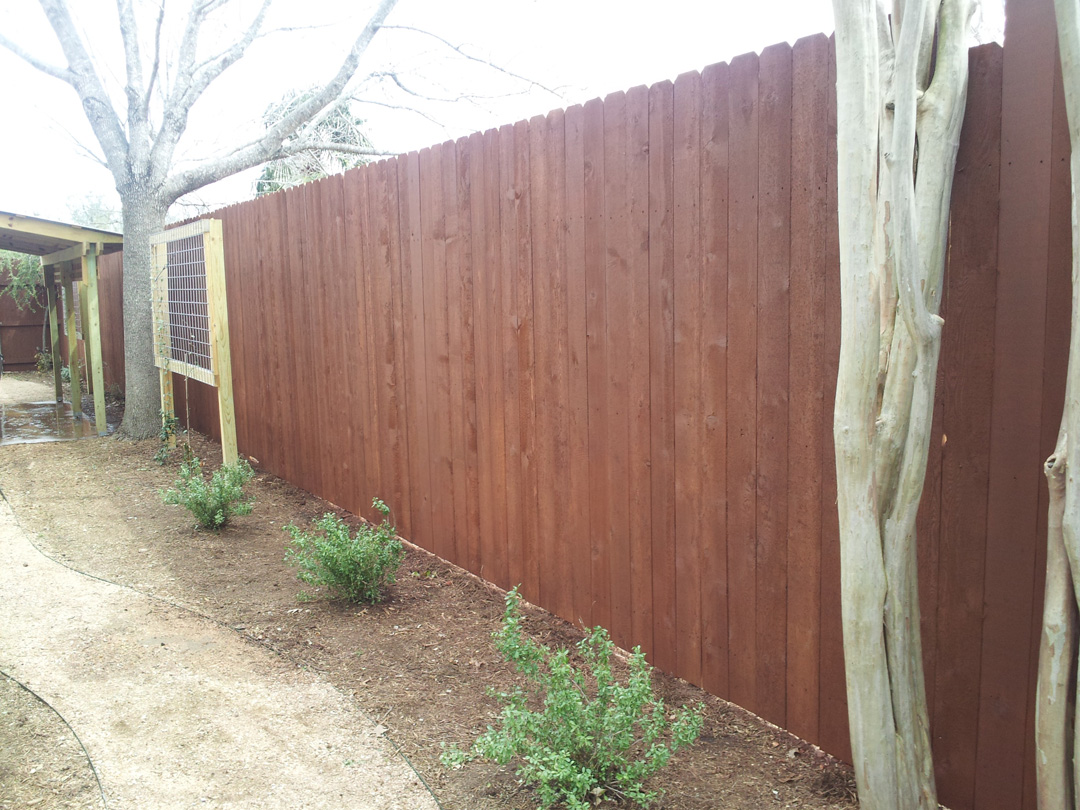Trustworthy Fence Staining Service: Maintain and Rejuvenate Your Fence!
Trustworthy Fence Staining Service: Maintain and Rejuvenate Your Fence!
Blog Article
How to Select the Right Fence Discoloration for Your Building
When it pertains to boosting the appearance and toughness of your residential or commercial property's fence, choosing the appropriate tarnish is an essential choice that requires mindful consideration. With a myriad of alternatives offered on the market, each satisfying different timber kinds, shades, and transparency levels, the procedure can quickly end up being overwhelming. Making an enlightened choice can significantly affect the overall aesthetic appeals and longevity of your fencing. How can you make certain that you choose the best fence discolor that aligns with your home's style and upkeep requirements? Let's discover some essential aspects to lead you in this decision-making procedure.
Recognizing Wood Types
To pick the proper fence tarnish, it is crucial to have a detailed understanding of the different kinds of timber commonly utilized for fence. When selecting a fencing tarnish, it is vital to take into consideration the kind of timber being made use of to make certain compatibility and optimum protection. Recognizing the features of various wood types will assist you make a notified decision when it comes to selecting the appropriate fence stain for your home.
Choosing the Right Color
Picking a suitable tone for your fence discolor is a critical decision that considerably affects the general aesthetic allure of your building. The shade you choose should enhance the design of your home, mix sympathetically with the environments, and mirror your individual taste. When picking a shade, take into consideration the existing shade combination of your building. For an all-natural look, earthy tones like browns, greens, or grays function well. These shades can assist the fence blend right into the landscape and develop a natural look. If you choose an even more modern-day or strong look, consider selecting darker shades like black or deep charcoal for a striking comparison. Lighter colors such as whites or light grays can make a fencing show up larger and include a touch of sophistication to your home. Ultimately, the ideal color selection will certainly enhance the elegance of your fencing and boost the general curb charm of your home.

Taking Into Consideration Transparency Degrees
When choosing the best color for your fence stain, another important aspect to think about is the level of transparency that will best suit your building's visual and upkeep needs. Transparency degrees in fence spots generally fall under three categories: clear, semi-transparent, and strong. Transparent discolorations permit the natural beauty of the timber to reveal with while offering minimal defense versus the components. They are perfect for brand-new or properly maintained fencings where showcasing the timber grain is a top priority. Semi-transparent spots provide an equilibrium in between color improvement and security, enabling some wood grain to be noticeable while offering moderate securing from UV rays and wetness. Solid discolorations, on the various other hand, give the most protection as they totally cover the wood with an opaque finish. These appropriate for older fences or those looking for substantial defense or shade modification. Think about the degree of direct exposure your fencing encounters, the wanted upkeep regularity, and the aesthetic you desire to accomplish when picking the right transparency degree for your fencing stain.
Reviewing Upkeep Requirements
Thinking about the longevity and maintenance of your fencing, assessing the upkeep needs is crucial in establishing the most suitable fence discolor for your building. The level of maintenance needed for your fence can vary depending upon factors such as the kind of timber, climate condition in your location, and your individual choices.
When assessing upkeep requirements, it is necessary to consider the toughness of the fence stain. Some discolorations call for more regular reapplication than others, so choosing a tarnish with a much longer life expectancy can help in reducing the overall upkeep requirements of your fence (Fence Staining). In addition, aspects such as resistance to UV rays, water, and mold can affect how commonly you require to re-stain your fence

Examining Samples Before Application
Before applying any type of fence stain, it is advisable to carry out sample tests to make certain compatibility with the timber and desired aesthetic end result. Examining examples allows you to evaluate how the stain will connect with the certain type of timber used in your fencing, as different timbers can take in stains differently. To begin, pick a little low-profile area of the fencing to apply the discolor examples.
Conclusion
Finally, choosing the ideal fence discolor for your property entails comprehending the timber type, selecting the appropriate color, taking into consideration transparency levels, assessing upkeep demands, and screening samples prior to application (Fence Staining). By taking these elements right into consideration, you can make sure that your fence discolor enhances your residential or commercial property while giving the necessary defense and sturdiness. Make an educated decision to improve the look and longevity of your fence
Report this page